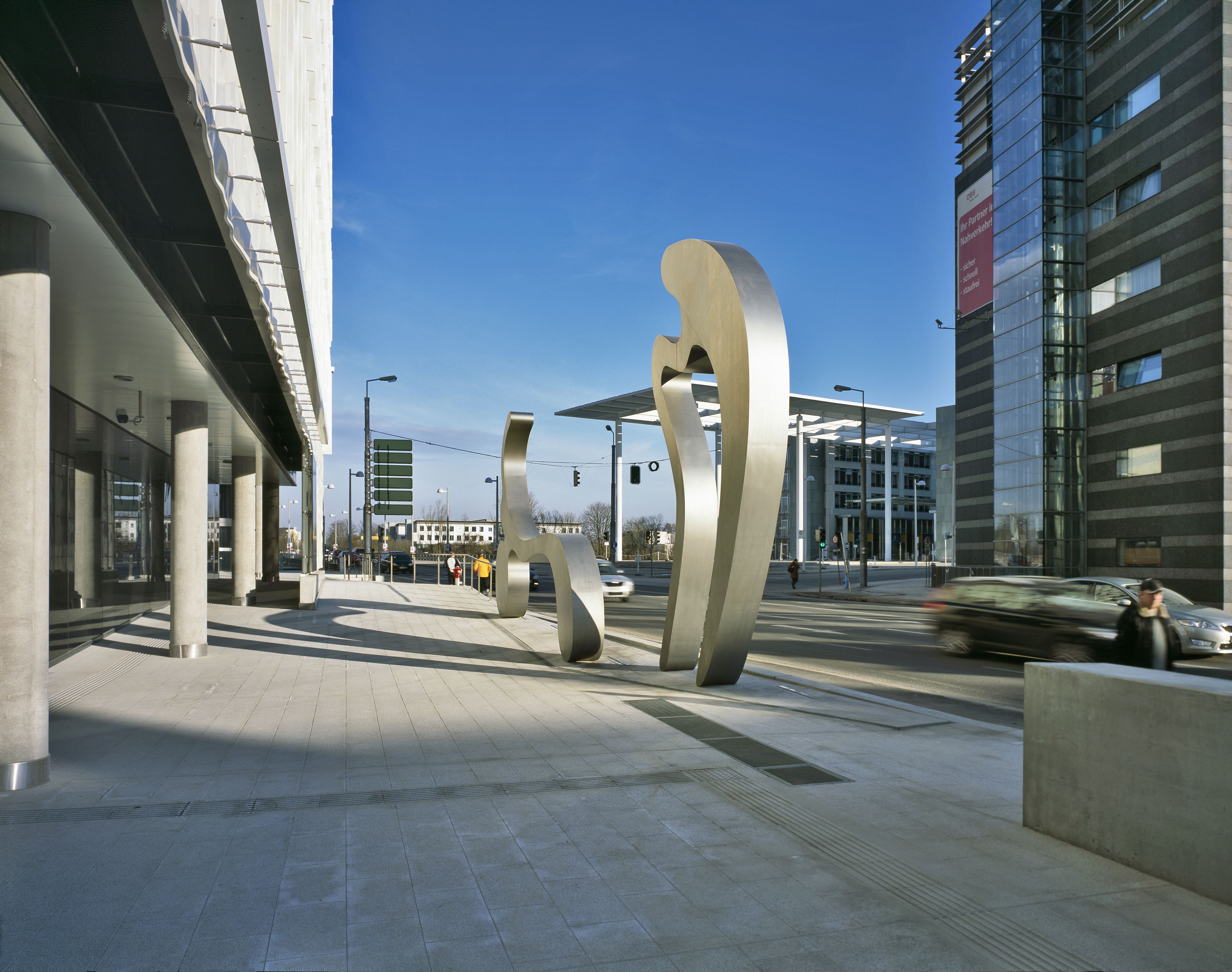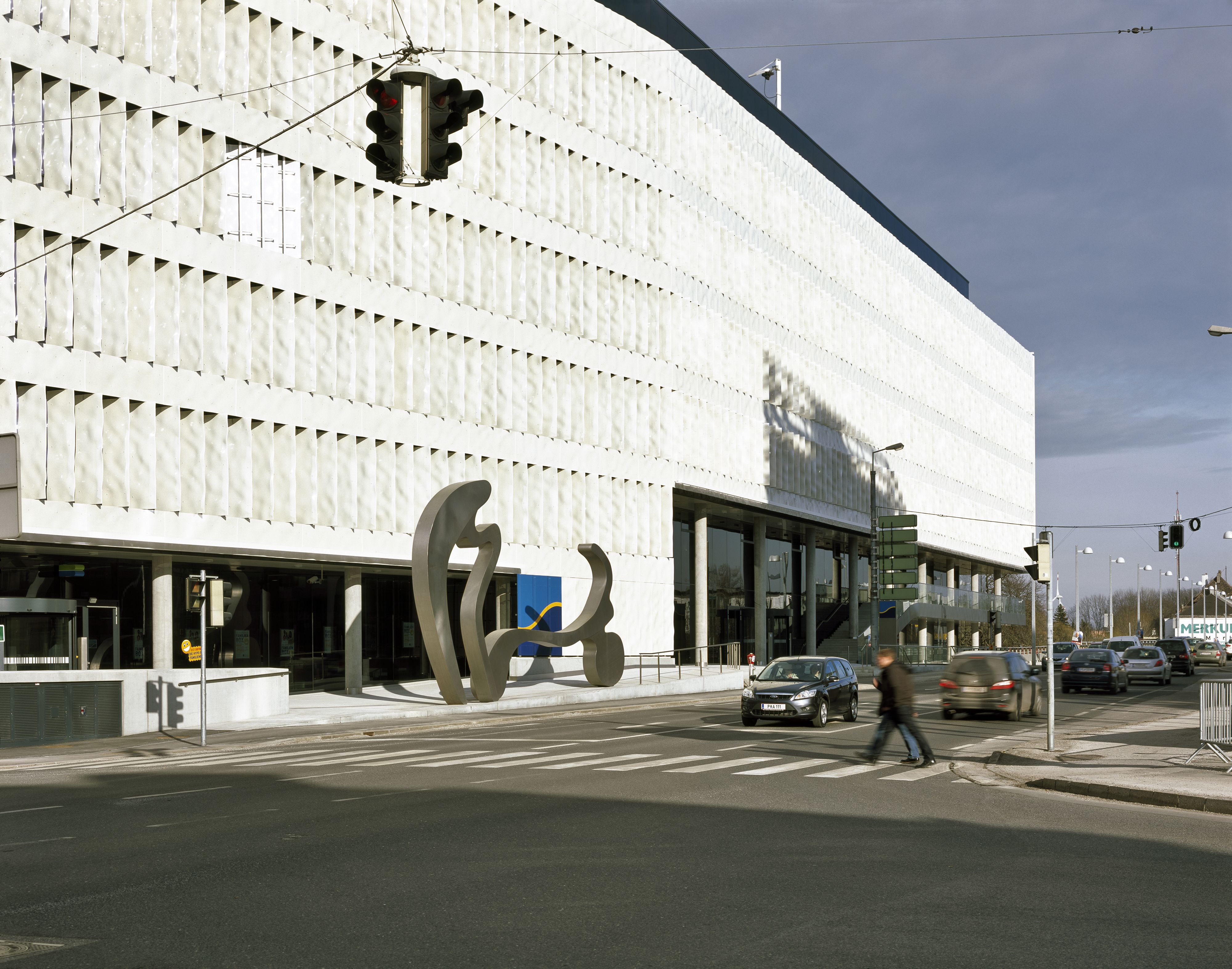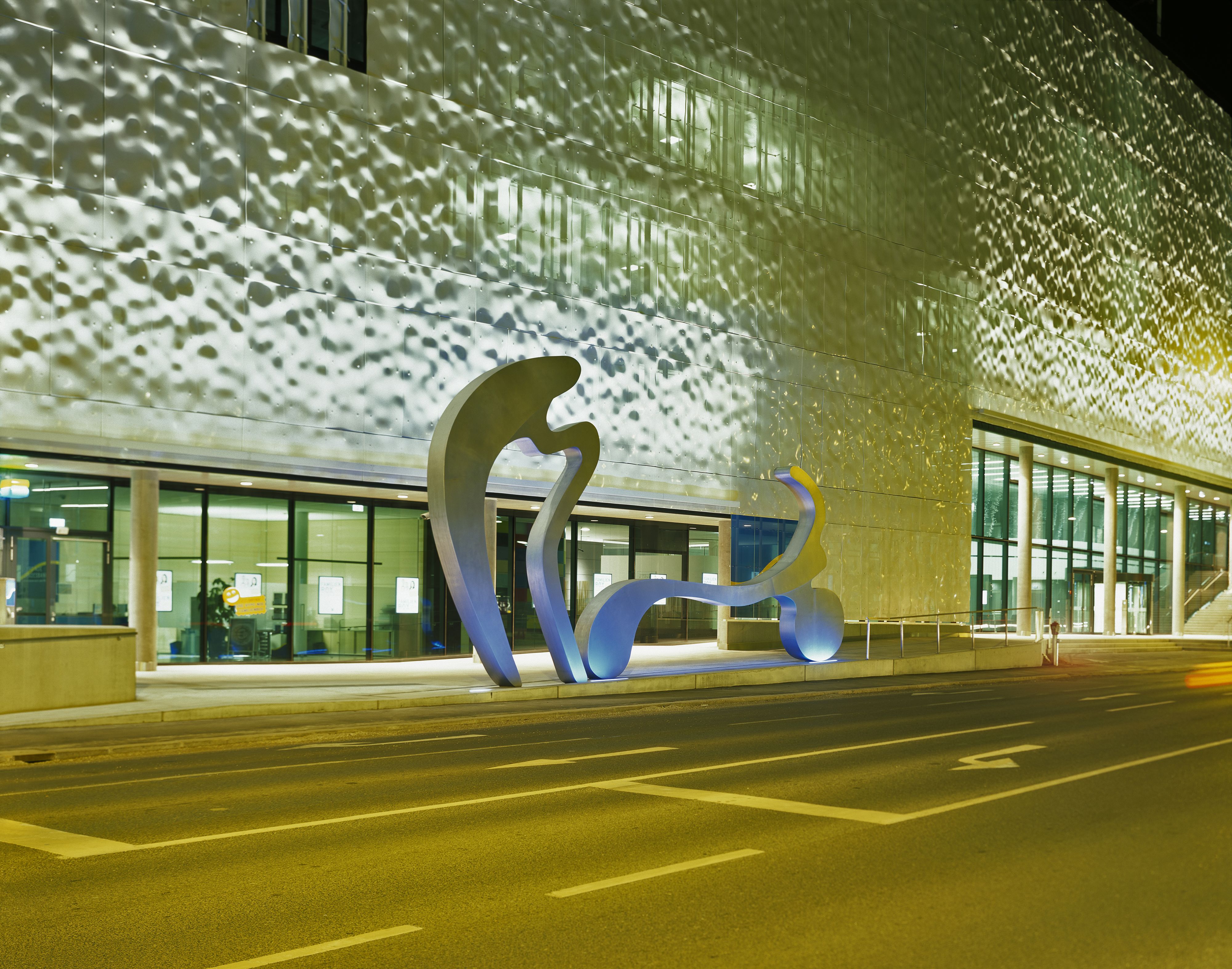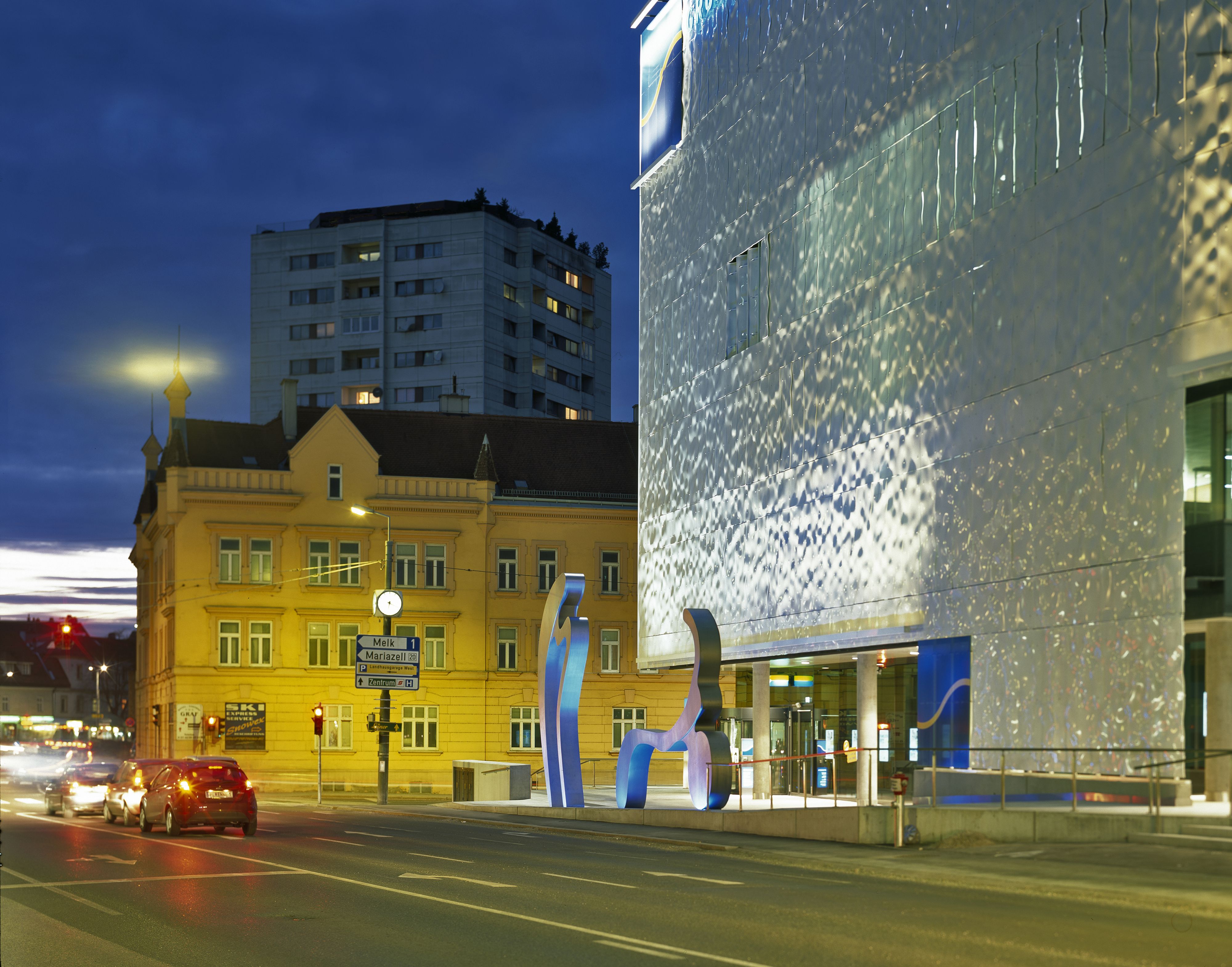Manfred Wakolbinger
:
Haus und Bank
Back
Information
Another work by the sculptor Manfred Wakolbinger in St. Pölten has been added to the "art treasures" in Lower Austria’s public space. Located in front of the new headquarters of the HYPO NOE Landesbank in a low-energy building designed by the architects Johannes Zieser and Ernst Maurer, this work is a pair of sculptures called Haus und Bank. The sculptures are made of stainless steel and are over two stories in height.
Since the completion of his first sculpture in Lower Austria’s public space at Minoritenplatz in Krems in 1993, Manfred Wakolbinger has continued to develop his multimedia art practice with remarkable consistency and variety. This was also apparent in his recent exhibition “Up from the Skies” – with sculptures, photographs, and films by the artist – in the newly opened Landesgalerie für zeitgenössische Kunst in Krems. Another work by the sculptor Manfed Wakolbinger in St. Pölten has been added to the “art treasures” in Lower Austria’s public space. Located in front of the new headquarters of the HYPO NOE Landesbank in a low-energy building designed by the architects Johannes Zieser and Ernst Maurer, this work is a pair of sculptures called Haus und Bank. The sculptures are made of stainless steel and are over two stories in height. The sculptor transformed the two meanings of Bank in German, "bank" and "bench," into amorphous metal objects, which is characteristic for his work. Like a snapshot of fluid metal, the figures reflect the dynamics and momentum of the building’s exterior. Manfred Wakolbinger’s description of his sculpture at Minoritenplatz in Krems from 1993 still rings true: “Just as the sculpture becomes part of the square, the surroundings become part of the sculpture through their reflection in the glass of the sculpture. The sculpture establishes a relation with the surrounding space and creates negatives of it.” With acute sensibility, Manfred Wakolbinger interacts with pre-existing sites. Through his sculptures, he creates a dialogue between art as something autonomous and the sociology of the environment. In Haus und Bank, his play with the double meaning of Bank in German of credit institute and something to sit on demonstrates the artist’s humor and curiosity. He often takes linguistic ambiguities as a basis for his artistic explorations, in which he combines reality with fiction. The pair of sculptures is illuminated around the clock by yellow and blue lights from below, yellow and blue being the colors of Lower Austria and the bank.
(Cornelia Offergeld)
Images (6)






